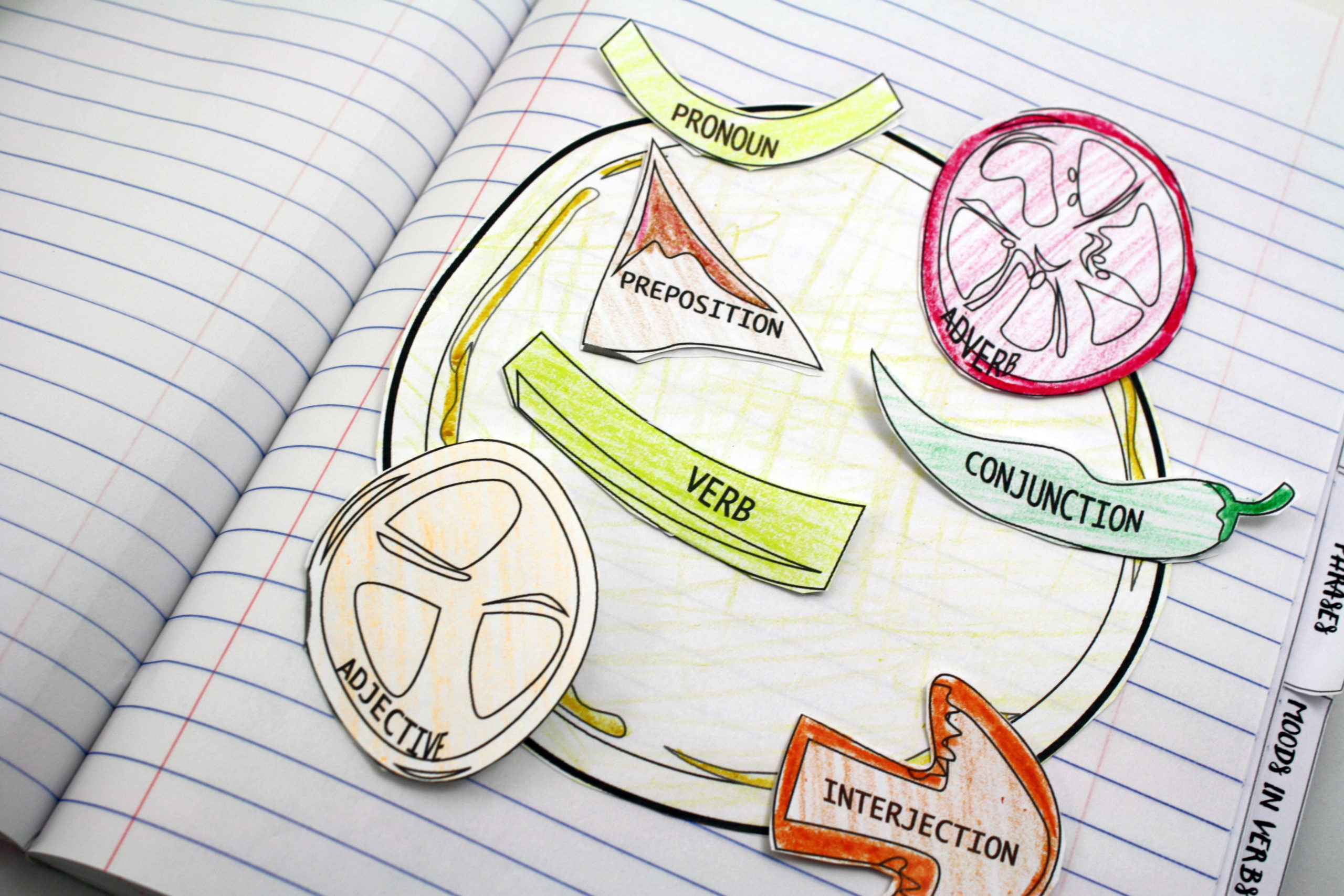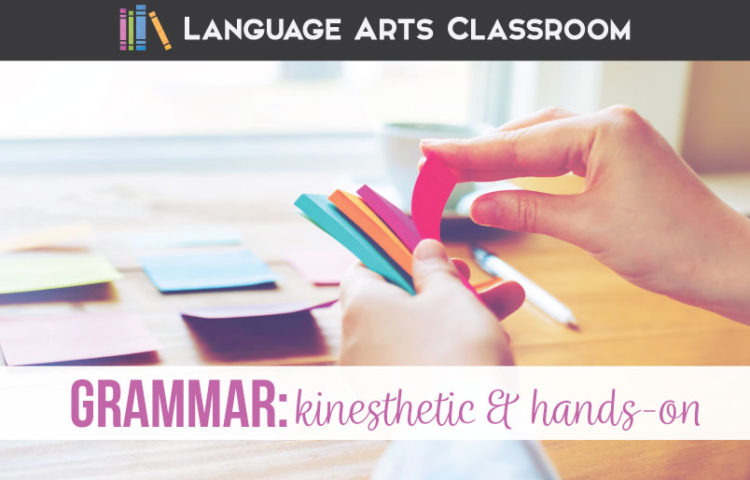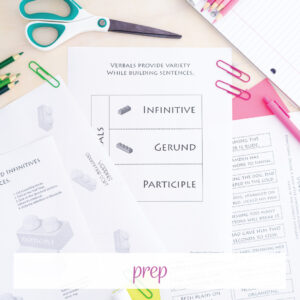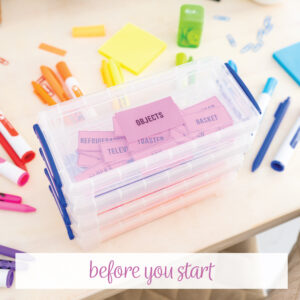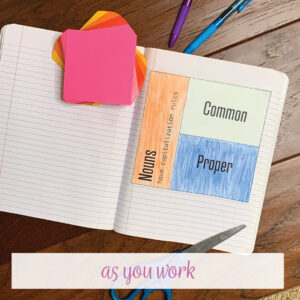Hands-on grammar lessons: students holding and engaging with their language? Yes, please.
Students LOVE manipulating, playing, and holding their language with grammar manipulatives. When I talk about hands-on grammar lessons, I’m normally referencing grammar manipulatives. Basically, these pieces are paper, blocks, or sticky notes that students manipulate with directions. You can make the manipulatives whatever your students need: conjunctions, phrases, types of punctuation, clauses, anything.
The best part about hands-on language arts activities: Once students engage with the activity, they start building on the concepts themselves.
Grammar manipulatives make for highly engaging grammar lessons.
What are the benefits of hands-on grammar lessons?
Hands-on grammar lessons offer students a more interactive and engaging learning experience. By actively participating in grammar activities, students can better understand and apply grammar rules, improve their writing skills, and develop a deeper comprehension of grammar concepts.
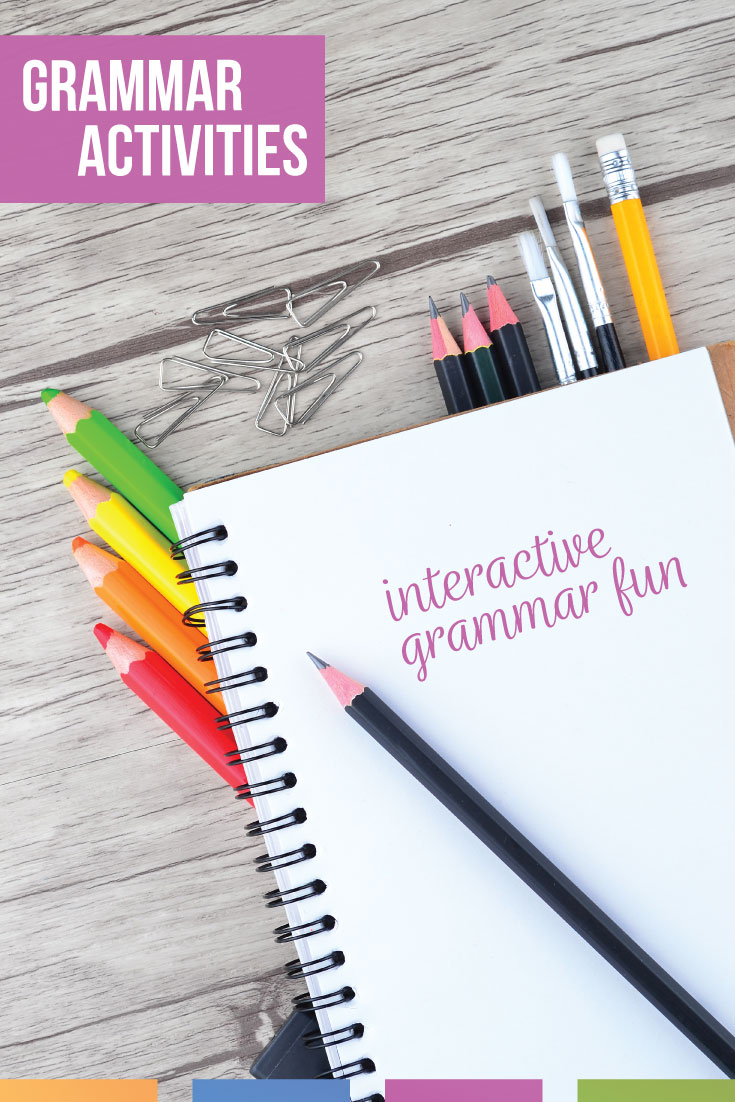
However, the more I experiment with hands-on grammar activities, the more I realize that with a few modification, even a grammar worksheet can become hands-on. For instance, take a worksheet (with pre-made sentences), enlarge the print, copy, and cut apart the sentences. We can sort those sentences, use them as sentence starters, cut them apart and add them to other sentences. . . basically, have fun with language.
Overall, the more I allow students to help me build hands-on grammar activities, the more meaningful the process. (Overall, relax and let the students play with the pieces!)
Since I have worked on hands-on language arts activities for some years, I wrote down what helped me in designing these lessons. Here are TEN fast tips to make sure your students will beg you for more grammar fun:
Ten Tips for Hands-On English Grammar
Prep…
Prepping all the parts of speech, punctuation, and rules takes time, so prep once.
1. Print and sort.
Organize once, play many times. (Card stock helps too.) I’ve collected cases over the years, so my containers are mismatched. Plus, the first time I cut the grammar pieces (independent clauses, gerund phrases, prepositional phrases, verbs), I was sitting for hours.
You don’t want to waste all your hard work. Cut, organize, and label your physical pieces that students will handle. The same works for directions; I typically laminate the directions students will follow while playing.
2. Gamify grammar!
Students will remember punctuation and sentence rules when they hold and manipulate their language. Funny subjects, verbs, and phrases increase memory. My favorite “silliness” is to use odd animals with goofy verbs.
Add a timer to solving grammar mistakes. Vote on the silliest sentence using correct sentence structure. When students are in small groups, you can have them compete in ways.
3. Color. Code.
Before I present the hands-on language arts activities, I consider what color scheme will work. For instance, I use yellow for dependent clauses and green for independent clauses with directions. Decide what makes sense for you and your classes!
When students have a voice in designing the tools, the practice means more to them, so don’t be afraid to ask for input. If classes will play frequently, consider turning the color designations into grammar posters.
4. Try blocks.
Sticky notes, card stock, and even regular paper will work. Still, students love building with blocks. Grab blocks from garage sales or on clearance. Building sentences (writing and grammar!) with blocks provides that metaphor, that visual that students can build their own writing.
Before you start…
Great! You have your grammar practice prepped. Here are great ways to ensure students practice effectively.
5. Provide direct grammar instruction first.
If students don’t have background, they won’t understand the purpose of playing with slips of paper. Sure, they will be able to build sentences. The purpose is for students to understand a comma works with two independent clauses and a coordinating conjunction. Students must understand those terms to follow your directions. Give a short lesson, practice a few examples, and then have students work on the manipulatives.
6. Plan to reach every student.
Hands-on grammar lessons provides the teacher with opportunities for differentiation and scaffolding. Ask students to build a simple sentence, and then a compound sentence. Add a participial phrase to modify a subject. What type of conjunction is used? Could the sentence become a complex sentence by adding a subordinating conjunction?
What about grammar errors? We can look at grammar skills that will prevent confusion in writing. Approach the activities as a fun twist on practicing correct grammar.
Prep what you will ask if you are nervous.
7. Start a writing project.
If students are struggling to start a writing project, create some quick manipulatives that deal with the topic. (Sticky notes might work well in this situation.) Ask students to brainstorm a few sentences that they can then implement into their writing. Use the opportunity to connect grammar to writing.
As you work…
Rotate as students use the pieces. Lesson plans for this portion can be general: gather information data, provide structure, encourage different types of sentences in construction. Here are other ideas.
8. Provide feedback.
Inevitably, students will create a misplaced modifier, a dangling participle, or a comma splice. Use those errors as learning opportunities. Correct the punctuation or phrase and show the best writing opportunity.
9. Take pictures.
When a student creates a funny or perfect sentence, snap a memory. Soon you’ll have an assortment of authentic examples. Incorporate those pictures into your presentations of grammar concepts. These pictures really liven (and provide authentic examples) presentations.
10. Build community.
Encourage students to interact and learn from each other. I often ask them to take pictures and look at their friends’ sentences. You can even build short paragraphs together, albeit very silly ones.
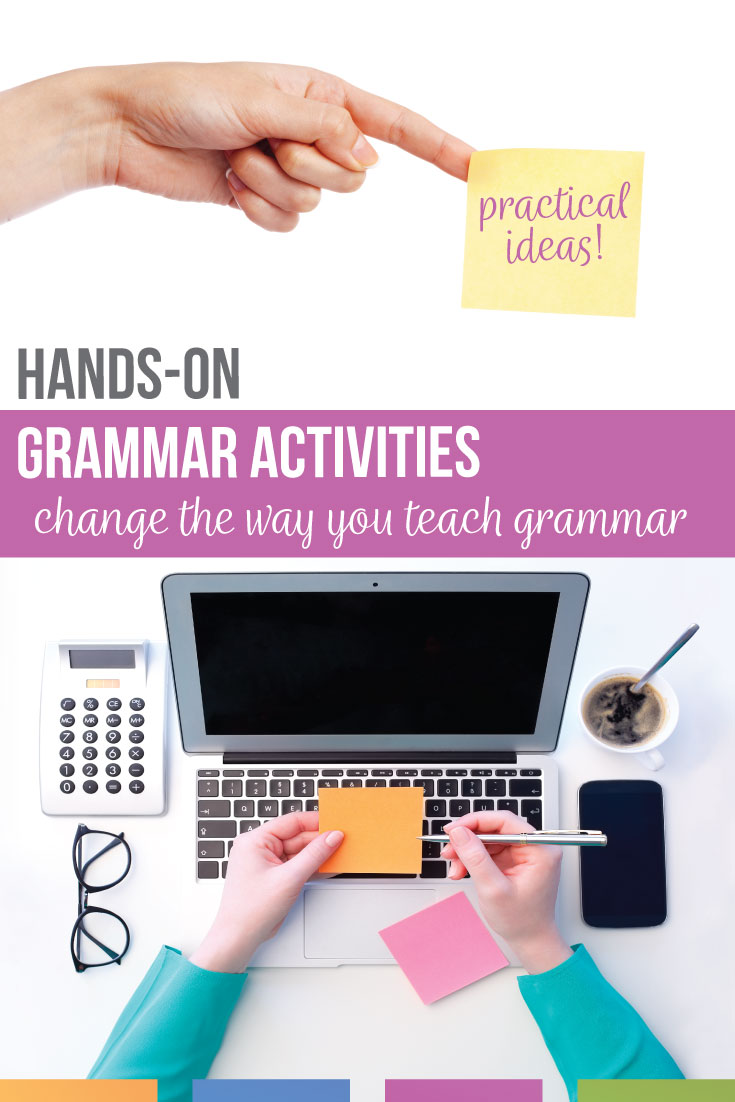
Grammar can be exciting and you can be a rockstar where learners understand English language with depth! Younger students and middle school students must understand the foundation of language use, and hands-on lessons cement their understanding.
Incorporate hands-on grammar lessons as extension activities, review, or station work. Classes absolutely know more language than they will admit, and once you have a stock of grammar manipulatives, the possibilities will be endless.
